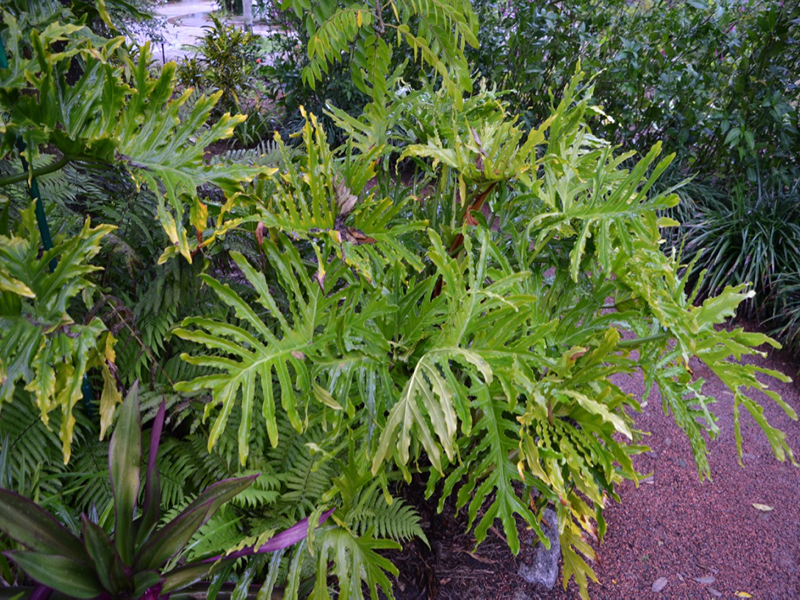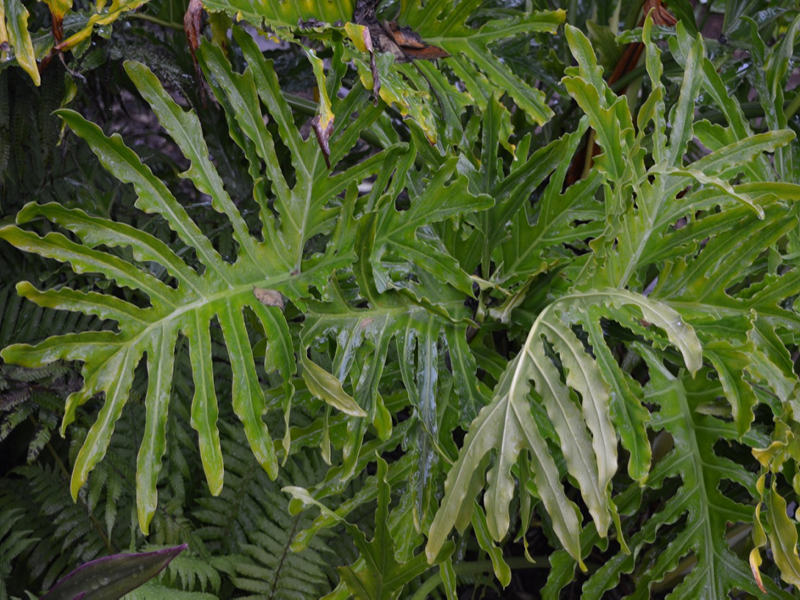
Perennials, Tropicals > Philodendron > Philodendron bipinnatifidum > Philodendron bipinnatifidum 'Hope'
Philodendron bipinnatifidum
'Hope'
Hope Cut-leaf Philodendron, Hope Tree Philodendron
| Family |
| Araceae |
| Genus |
| Philodendron |
| Species |
| bipinnatifidum |
| Cultivar |
| 'Hope' |
| Category |
| Perennials, Tropicals |
| USDA Hardiness Zone |
| Zone 9a - 11 |
| Canadian Hardiness Zone |
| Requires cold season protection under glass. |
| Temperature (°C) |
| (-6.7) - (-3.9) |
| Temperature (°F) |
| 20 - 25 |
| Height |
| 3 - 5 m if not climbing |
| Spread |
| 3 -5 m or more |
Photographs
Description and Growing Information
Flowering Period
| General Description |
| A shrub-like tropical plant that has unique, green foliage with large growing, uniquely shaped leaves. With age, the leaves take on a deep-lobed pattern. |
| Landscape |
| Houseplant or as a feature in large indoor plantings such as shopping malls. In tropical zones it is used as a major landscape plant often in place of shrubs. |
| Cultivation |
| Best grown in partial to full shade with rich, moist soil. Does not tolerate salt build up so flush soil regularly or used distilled water for irrigation. |
| Shape |
| Loosely rambling and epiphytic in nature. |
| Growth |
| Fast |
| Bark/Stem Description |
| The trunk is relatively thick and woody with characteristic “eye-drop” leaf scars. It can produce aerial roots that absorb water and nutrients. |
| Leaf Description |
| Leaves are simple, large, deeply lobed, and attached to long, smooth petioles. They can grow up to 1.2 m long. Leaves range from medium green to dark green. |
| Fruit Description |
| Showy, edible to birds. |
| Texture Description |
| The leaves of this plant are significantly more toxic than the standard Philodendron if ingested, and is therefore not recommended to a household with pets that tend to chew on leaves. The sap may also irritate sensitive skin. |
| Notable Specimens |
| Harry P. Leu Gardens, Orlando, Florida, United States of America. |
| Ethnobotanical Uses (Disclaimer) |
| All parts of the plant are toxic. When eaten, intense burning and swelling of the lips, tongue, and throat, as well as difficulty speaking can occur. |

